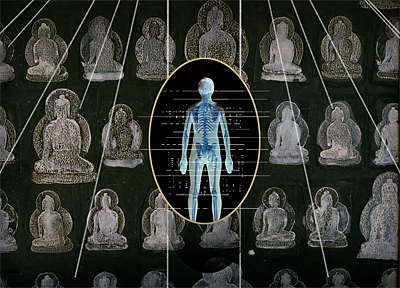
The New York Times published an article a few days ago about the Singularity—a time in the future when a superior intelligence dominates and life becomes something so different that we can’t predict what shape it will take or understand it from our current, limited perspective. Ashlee Vance writes:
At that point, the Singularity holds, human beings and machines will so effortlessly and elegantly merge that poor health, the ravages of old age and even death itself will all be things of the past. Some of Silicon Valley’s smartest and wealthiest people have embraced the Singularity. They believe that technology may be the only way to solve the world’s ills, while also allowing people to seize control of the evolutionary process. For those who haven’t noticed, the Valley’s most-celebrated company — Google — works daily on building a giant brain that harnesses the thinking power of humans in order to surpass the thinking power of humans.
All this transhumanist talk reminds me of the James Hughes Tricycle interview with Richard Eskow “Cyborg Buddha,” blogged about previously here. To me, the idea of further merging with technology to transcend human limitations feels somehow inauthentic—but it’s hard to pinpoint exactly where to draw the line. On the “authenticity” question, Hughes argues that Buddhist thought is in line with a technologically advanced future:
Buddhism rejects the notion of “authenticity.” The core idea of anatta is that there is no permanent and abiding or “authentic” self. There is only change and your own conscious process of self-creation. The Abrahamic faiths believe in a soul, which is carried into secular ideas of “authentic self.” But Buddhism doesn’t. A lot of people don’t want to take psychiatric medications because they don’t think they are “themselves” on drugs. But when we talk to people who have severe depression or ADD, many of them say, “I’m not my true self until I take the drug.” A Buddhist perspective might be “Well, I’m glad you feel that way, but in fact you’re not your ‘true self’ either time.”
Thank you for subscribing to Tricycle! As a nonprofit, we depend on readers like you to keep Buddhist teachings and practices widely available.